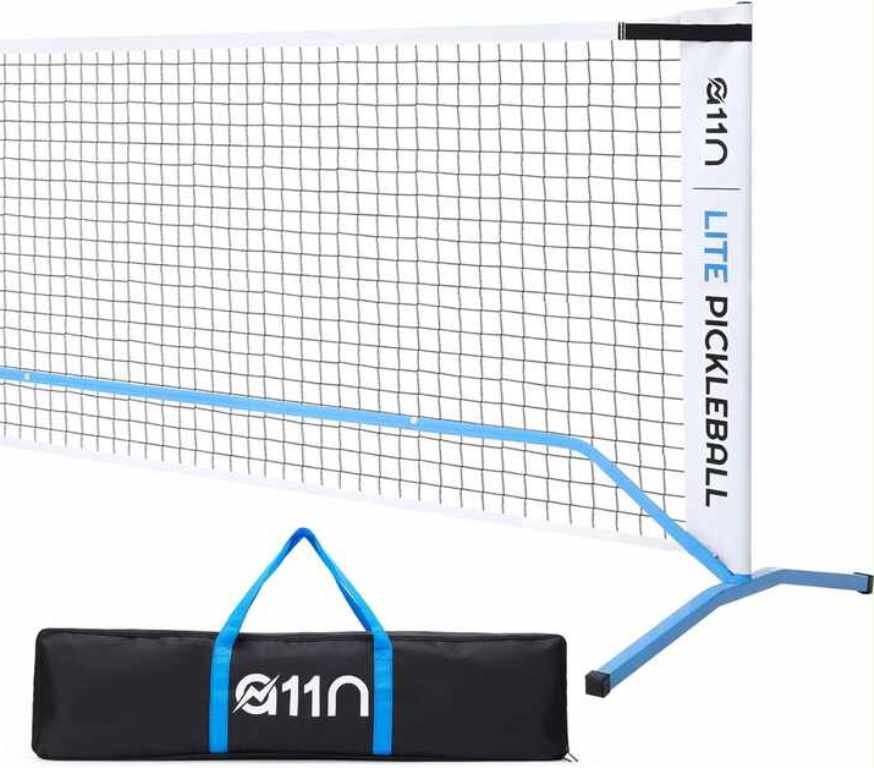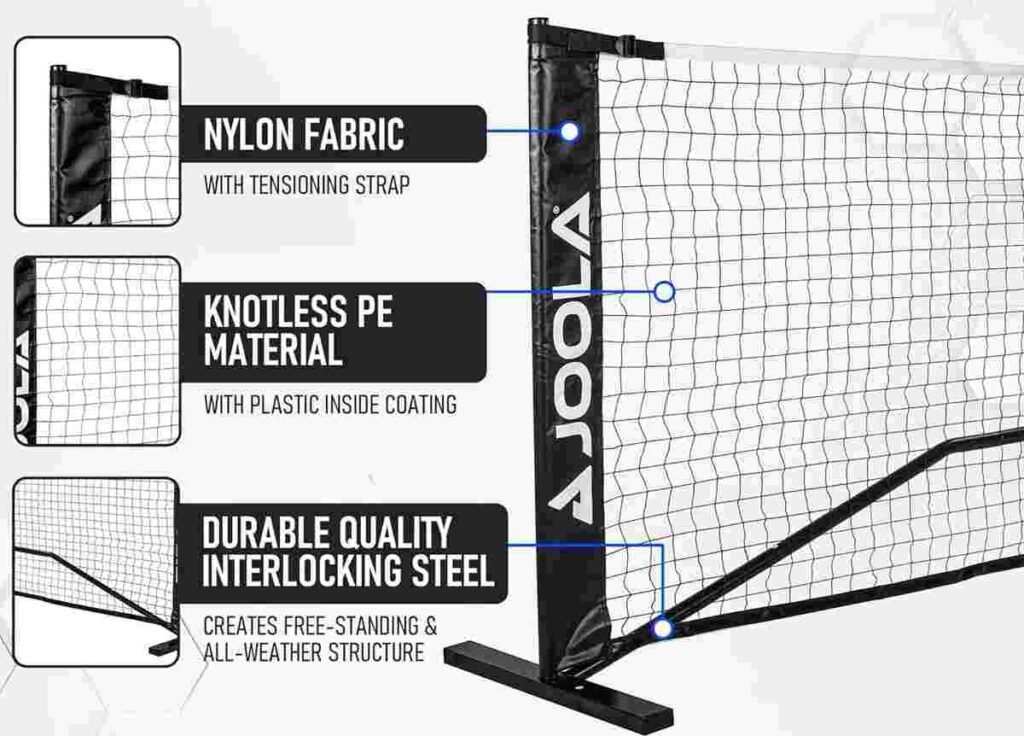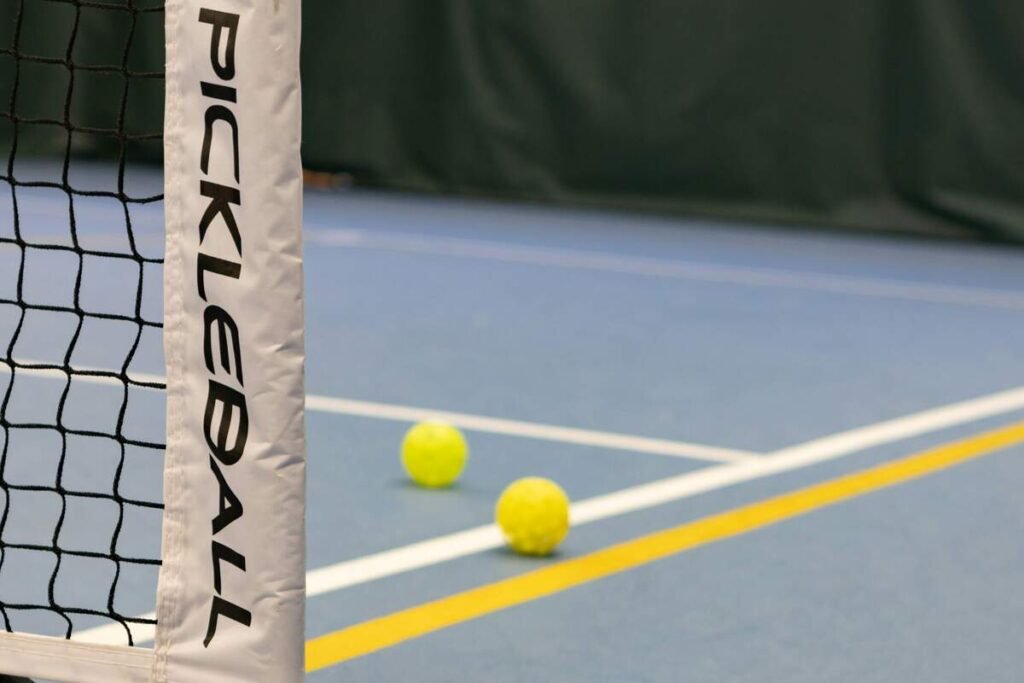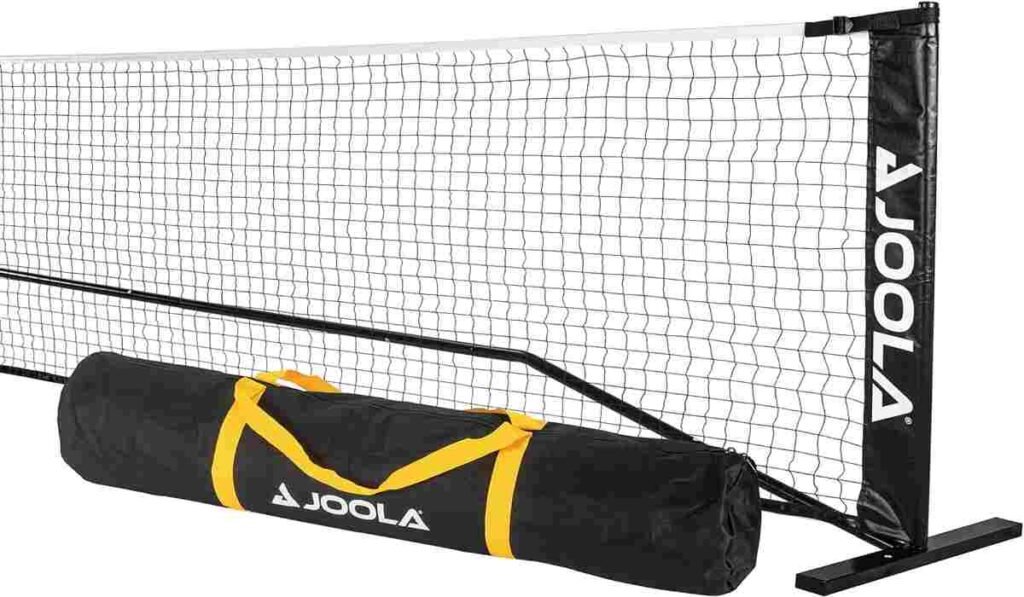In the fast-paced world of sports, agility meets strategy. Pickleball is one game, in particular, that has been making waves across communities. This blend of tennis, badminton, and ping pong has captured the hearts of millions worldwide. At the core of this exhilarating sport lies a crucial element of the pickleball net. In this comprehensive guide, we explore the anatomy of the Pickleball net.
We also discuss its specifications and significance, revealing its role as the pivotal component of the game. Later, we will discuss its specifications in detail. We will also highlight its importance and role as a pivotal game component.
Understanding Pickleball: A Brief Overview
Let’s start by understanding the basics of Pickleball before we delve into the details of the net. Pickleball is often referred to as the fastest-growing sport in America. The game of Pickleball can be traced back to the mid-20th century. Conceived as a backyard pastime, it was originally played in home gardens. However, it has evolved into a competitive sport. It is now played in community centers, parks, and professional arenas. Its popularity has spread worldwide.
The game is played on a court, typically about a third the size of a tennis court, with similar dimensions to a badminton court. Players use solid paddles to hit a perforated polymer ball over the net. The objective is simply to outmaneuver opponents. It was challenging to place shots within the court boundaries and score points strategically.
The Anatomy of the Pickleball Net

The net, a quintessential divider, stands at the heart of every pickleball court. It delineates the playing area and is pivotal to gameplay dynamics.
Let’s dissect the anatomy of the Pickleball net:
Height:
Regulation Pickleball nets are 34 inches (87 cm) in height on the sidelines and 36 inches (91 cm) in height at the center. Players from exploiting height differentials during serves. Players from exploiting height differentials during volleys.
Width:
The width of the pickleball net varies based on court size. For a standard-sized court, the net measures 20 feet (6.1 meters) in width, spanning the entire width of the court. However, for courts with reduced dimensions, such as those used in recreational settings, the net may be adjusted accordingly.
Material:

Pickleball nets are typically crafted from durable materials. Common materials include nylon and polyester. These materials ensure resilience against repeated ball and paddle impacts.
The net’s construction is crucial for maintaining its integrity. This prevents sagging or deformation during gameplay.
Tensioning System:
A robust tensioning system is essential for maintaining the net’s stability and uniformity throughout the match. This system usually includes adjustable straps or cords connected to the net posts. Precise tension adjustments can be made to meet regulatory standards with these straps or cords.
Visibility Strips:
To enhance visibility, pickleball nets often feature contrasting color strips. These strips are located along the top edge of the net to aid players in judging the ball’s trajectory. These strips serve as visual markers, especially in outdoor settings where lighting conditions may vary.
Regulation Standards and Specifications
In competitive pickleball matches: Adherence to standardized regulations is essential. This ensures fairness and consistency across all levels of play. The USA Pickleball Association (USAPA) and the International Federation of Pickleball (IFP) are the governing bodies of the sport. They establish and enforce regulations to uphold the integrity of the game.
Here are some key regulations of Pickleball nets:
Net Height:
As previously mentioned, the standard height of the Pickleball net is 34 inches at the sidelines. The height at the center is 36 inches. Uniform height ensures a level playing field for all players. Regardless of their height or reach, this condition applies to everyone.
Net Width:
The net must span the entire width of the court, measuring 20 feet (6.1 meters) in width for standard-sized courts. The width of the net ensures adequate coverage. This prevents the ball from passing outside the designated playing area.
Mesh Size:
The mesh size of the net must comply with regulatory standards. This refers to the spacing between individual strands or fibers. The ball should not be able to pass through unintentionally.
Pickleball nets optimally feature a mesh size of approximately 3/4 inches. This ensures superior visibility. Additionally, it provides effective containment with a mesh size of approximately (1.9 cm.
Tension Requirements:
Regulations stipulate specific tension requirements for Pickleball nets to maintain consistency and uniformity. The tensioning system must allow for precise adjustments. This is necessary to achieve the prescribed net height. Preventing sagging or slackness during gameplay is also essential.
Visibility Enhancements:
Certain enhancements are encouraged. For example, visibility strips or contrasting colors along the top edge of the net. These enhancements significantly improve visibility for both players. They provide an optimal gaming experience for spectators as well.
The Significance of the Pickleball Net

The Pickleball net serves a functional role as a physical barrier in the game. Pickleball holds symbolic significance. It represents the spirit of competition, camaraderie, and sportsmanship.
Here’s why the Pickleball net is more than just an inanimate object:
A Symbol of Unity:
The net symbolically bridges players across the court. It connects individuals regardless of age, gender, or skill level. It is a tangible reminder that, despite being opponents in the competition, players are united by their love for the game.
A Gateway to Strategy:
The placement and movement of the Pickleball net profoundly influence the strategic dynamics of the game. Players target shots to clear the net. They land within the opponent’s court, testing agility, reflexes, and decision-making prowess.
Equalization of Opportunities:
Pickleball nets have standardized height and width. This ensures equitable opportunities for all players, irrespective of their physical attributes or playing style. It levels the playing field, fostering a sense of fairness and inclusivity within the Pickleball community.
Canvas for Innovation:
The basic design of the Pickleball net stays consistent. However, there are numerous opportunities for innovation and customization. Manufacturers are working to enhance the performance of Pickleball nets. They do this through the use of advanced tensioning systems. Manufacturers also aim to improve the durability of Pickleball nets. They achieve this by using lightweight materials. They continually push the boundaries of what’s possible.
A Focal Point of Spectatorship:
During competitive Pickleball matches, the net is a key area of focus for spectators. It draws attention to crucial moments such as volleys, smashes, and strategic plays. The visibility of the strips and the contrasting colors help spectators follow the action more easily. This enhances the excitement and engagement of the audience.
Conclusion
In the world of Pickleball: Precision meets passion. The net is a crucial part of the sport. It represents more than just a physical barrier. The net holds significance beyond being a mere physical barrier in the sport. It serves as a conduit for competition, camaraderie, and celebration. Players continue to flock to Pickleball courts across the globe. The net remains steadfast, bearing witness to moments of triumph, resilience, and exhilaration. Next time you step onto a Pickleball court, take a moment to appreciate the net. The net, though silent, is an indispensable protagonist in this beloved sport.
Frequently Asked Questions About Pickleball Nets
1. What are the dimensions of the regulation of the Pickleball net?
The Regulatory Pickleball net is 34 inches (87 cm) in height on the sidelines and 36 inches (91 cm) in height at the center. It spans the entire width of the court, measuring 20 feet (6.1 meters) in width for standard-sized courts.
2. What materials are pickleball nets typically made from?
Pickleball nets are commonly crafted from durable materials such as nylon or polyester. These materials are chosen for their resilience against repeated impacts from the ball and paddle, ensuring longevity and performance.
3. How is the tension of the Pickleball net adjusted?
The tension of a pickleball net is typically adjusted. This is accomplished using a tensioning system. The system consists of adjustable straps or cords. These are attached to the net posts. Players can adjust the tension between these straps to meet regulatory standards by tightening or loosening them. This will prevent sagging or slackness.
4. Are there specific regulations regarding the mesh size of pickleball nets?
While there are no strict regulations concerning the mesh size of Pickleball nets: Most nets feature a mesh size of approximately 3/4 inch ((1.9 cm). This spacing between individual strands or fibers is chosen to prevent the ball from passing through unintentionally while maintaining visibility for players and spectators.
5. Do Pickleball nets require any special maintenance?
Pickleball nets require regular maintenance to ensure optimal performance and longevity. This may include periodic inspections for wear and tear, cleaning to remove dirt and debris, and adjustments to maintain proper tension. Additionally, storing the net in a dry, climate-controlled environment when not in use can help prevent deterioration.
6. Can pickleball nets be used outdoors and indoors?
Yes, pickleball nets are designed to be versatile and can be used both indoors and outdoors. However, outdoor nets may require additional weatherproofing to withstand exposure to elements such as sunlight, rain, and wind. Indoor nets may be subject to different environmental conditions, such as temperature and humidity, but generally require less maintenance.
7. Are there any regulations regarding the color or visibility of Pickleball nets?
There are no specific regulations concerning the color of Pickleball nets. However, adding visibility strips or contrasting colors along the top edge is encouraged for better visibility for players and spectators. These visual markers help in determining the ball’s trajectory. Their utility is particularly significant in outdoor settings. Outdoor conditions, such as varying lighting, make their use essential.
8. Can Pickleball nets be customized or personalized?
Yes, Pickleball nets can be customized or personalized to meet specific preferences or requirements. This may include adding branding or logos, selecting different colors or patterns, or even incorporating advanced features such as LED lighting for enhanced visibility during night play. Customization options may vary depending on the manufacturer or supplier.
9. Are there any safety considerations associated with Pickleball nets?
Pickleball nets are generally safe when installed and maintained properly. Players should exercise caution to avoid collisions or entanglements with the net during gameplay. Additional safety measures: Ensure the net is securely anchored. This is essential, especially in outdoor environments, to prevent tipping or collapsing. Wind gusts may pose a risk.


